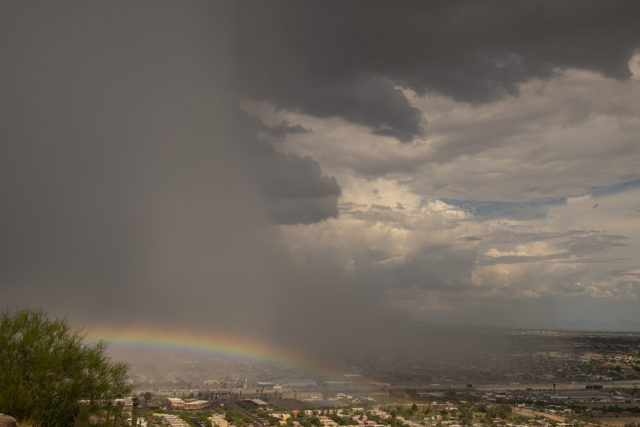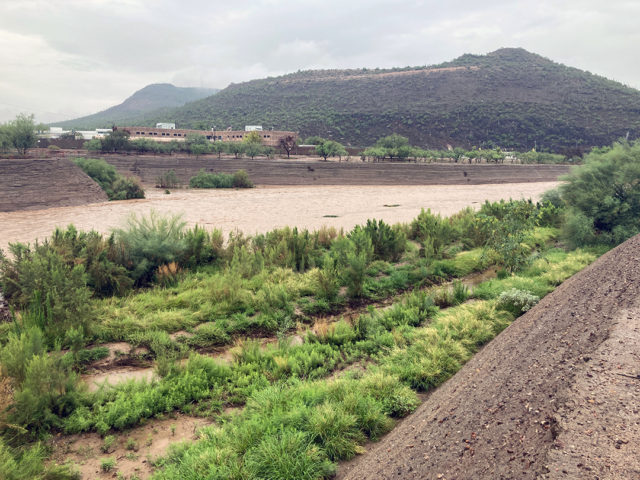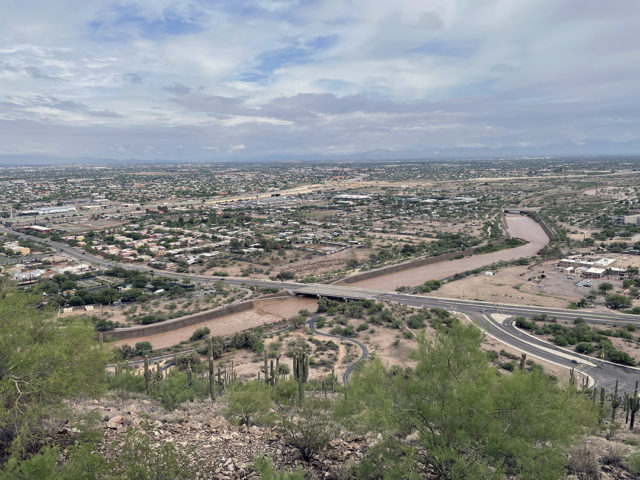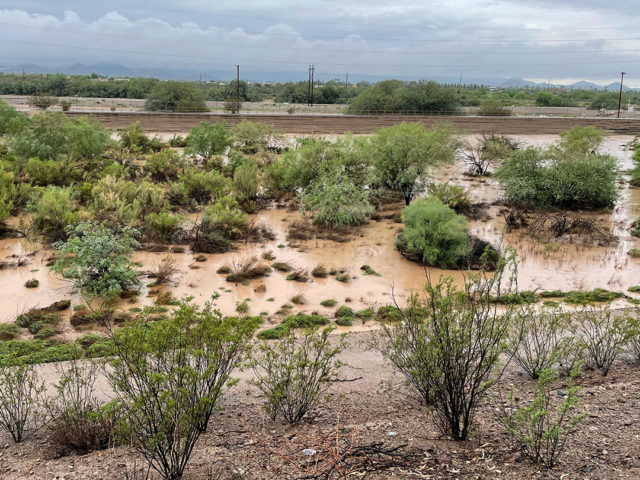By all measures, this year’s monsoon is making up for lost time.

Historical records from the Santa Cruz River valley are checkered wildly. One year’s entry marks the river as “full of water” and in another year there was so little water that entire villages had to pack up and move. This living river in the Sonoran Desert has historically, geologically, had boom and bust years, and the wide variations affected populations of humans, wildlife and plant communities. In recent history, rainfall in a typical monsoon (June–September) in Tucson totals three-and-a-half inches. Last year (2020) was one of the hottest, driest years on record, with only 1.62 inches of monsoon rain. This year, we have already logged 11.86 inches of rain during the monsoon—with more in the forecast!

By all measures, this year’s monsoon is making up for lost time. A burst of green grasses, plants, and trees grow and flower in reaction to the bountiful water at the Santa Cruz River’s headwaters in the San Rafael Valley, and across upper reaches of the river’s floodplain, which is the flat, terraced plain that forms over years of rivers flooding and receding. This vegetation helps stabilize the topsoil, and the seeds that fall and wash downstream will propagate and provide food for many types of wildlife. Fish, like the Gila topminnow, expand their habitat as they occasionally get washed downriver where new populations can establish. Monsoon river flows also scour the riverbed which results in more water percolating down into the aquifer. Taking Pima County’s Loop trail that parallels the Santa Cruz River makes it easy to see all the changes brought by the rain: wildflowers poking through the caked earth, a kaleidoscope of bright green trees, darting dragonflies and birds, toads and tadpoles. We welcome the changes, even if the sticky humidity feels foreign.

The monsoon rains have given the Santa Cruz River valley a much-needed quenching. And yet, the entire North American West has experienced 22 years of drought. So long, and so intense that it is no longer called a drought, but aridification—the long-term, more permanent drying of our region. The recent rainfall has been dramatic but is simply not enough to end the drought. The Santa Cruz is a tributary of the Gila River, which flows to the Colorado, making it part of the wider Colorado River Basin, where on August 16th, the first-ever water shortage was declared. Official reductions will limit Colorado River water available to Arizona and other Western states.
Hearing the crash of thunder during a late afternoon downpour spurs our efforts to conserve water, speed up conservation and better connect people with their natural resources because there is no end to the aridification in sight. Conservation strategies must be expanded. City and county leaders who create smart development policies can improve their community’s resilience and water security. Reclaimed, or recycled, water can sustain our desert river habitats. Planting trees on a large-scale can shade communities, while building rain gardens can will save our drinking water for drinking. Collaboration between cities, states, and sovereign tribes across the United States and Mexico is essential to not only cope but thrive in this changing climate.

Blog post by Luke Cole, associate director of the Santa Cruz River program, and Corinne Matesich, marketing communications manager
